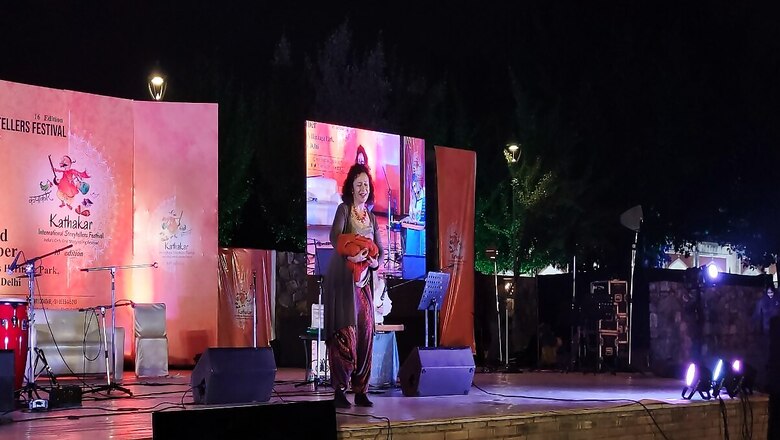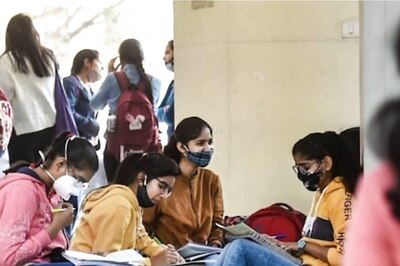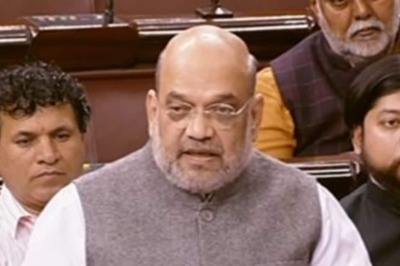
views
“Stories can revolve around anything and everything. It could be simply about a day in your life. But how you present it in front of people is what holds their attention,” said Rachna, a core member of the Kathakar Storytelling Festival.
The art of capturing and holding an audience’s attention happens to be one of the strongest skills of a performer. At a time when visual forms of art have become more popular and engaging, the 16th edition of the Kathakar festival stood as a testament to the fact that oral storytelling has not faded out. In fact, the wintry nights of Delhi infused with drizzling rains couldn’t stop people from sitting in the open to witness the performances of internationally acclaimed storytellers.
A three-day-long event, Kathakar claims to be India’s only storytelling festival, which was hosted this year from December 1 to 3 at Delhi’s Sunder Nursery. From global performers to Indian artists, the festival witnessed several people who have been associated with the field of storytelling for years now. Started in 2010 under the vision of Thakur Vishva Narain Singh who was the first braille editor of India, the festival aims to preserve the dying art of oral storytelling. One of the highlights of the evening on the concluding day of the festival on Sunday, was Kissey, Kahani aur Cinema – a conversation with Indian film director Imtiaz Ali.
“We focus only on oral storytelling and how the performers take you to the world of that story,” said Rachna. She further said that how one interprets a story that’s being narrated is very subjective but it manages to bring back the power of imagination among the listeners. On the first two days of the programme, the audience saw performances by storytellers from Australia, the UK, Japan, as well as India.
In a conversation with News18 about Kathakar’s impact on the people, Rachna also said that several schools from around the city had brought in their students in the first two days to attend the festival and learn about the ancient art form. She also shared how the storytellers get a platform and an opportunity to present their art through the event. “Many come to us every year saying that they want to learn storytelling and be associated with the art form,” she said.
The final day of the festival was graced by a plethora of storytellers whose presence on the stage captivated hundreds of people who had gathered there. One of the performers of the evening was Agnieszka Aysen Kaim from Warsaw, Poland, who presented the traditional Turkish storytelling, Meddah. Her performance was accompanied by Marta Maslanka, a percussionist, whose music complemented Agnieszka’s story on stage. An academician by profession, Agnieszka said that her interest in theatre and performing arts during her time in college landed her in the realm of storytelling. “Initially, I used to be very conscious of narrating stories in front of people and wondered who would want to wait and listen to me,” Agnieszka said. “However, my seniors guided me saying that my way of narration is what would make the audience stay and listen to me.”
When asked about her experience in terms of the audience’s reception in the countries where she has performed and in India, she said, “Indian culture has strong roots associated with storytelling. Most of the age-old tales are also long-form and mostly based on epics and that is why people here tend to be more connected to storytellers. Performing amidst the Indian crowd always delights me.”
Formed under the aegis of UNESCO and the influence of the Ghumakkad Narayan Travelling Literature Festival, the organisers of the event are mainly the Gahilote sisters, Prarthana, Rachna, and Shaguna who have been deeply involved with restoring and retaining the ‘dying’ art form of storytelling.
“We have been brought up in an environment where reading books and narrating stories was a part of our everyday culture. However, the generation that followed us showed a dip in their interest towards reading stories,” Rachna said while mentioning that reading beyond academic literature is also what they have been aiming to imbibe among the youngsters over the years.
Amidst the international artists, the audience also witnessed the enthralling performance by Andhra Pradesh’s S Hanumanthu who presented the Sundara Kanda episode from Ramayana through traditional shadow puppetry. Hanumanthu has never received a formal education and has taken up the art form descended from his ancestors. With the help of traditional hand-made puppets, Hanumanthu and his associates who were singers and instrumentalists presented a small episode from the Ramayana epic. Locally known as ‘Tholu Bommalata’, it literally means ‘dance of leather puppets’. With its origin dating back to the 3rd century BCE, the performers keep wandering across places to demonstrate their form of art. Talking about his experience as a professional in this field, he said, “If we receive government support then it would be helpful for us to perform and carry forward the art.”
The end of the three-day long festival was marked by a tête-à-tête between core organising member and journalist Prarthana Gahilote and Indian film director Imtiaz Ali. About a screening session of two of Ali’s films, namely Rockstar and Tamasha that was conducted on Sunday morning, he spoke extensively about the process behind crafting the stories. With several people glued around the stage till late evening, Imtiaz narrated a story for everyone which he termed ‘part fiction and part truth’. The audiences were requested to put away their phones and cameras during this session, thereby enabling people to literally ‘live the moment’.
Amid a time that is strongly connected across the virtual media, initiatives and events like Kathakar bind people together and help them stay rooted in their ancient art forms and culture.



















Comments
0 comment